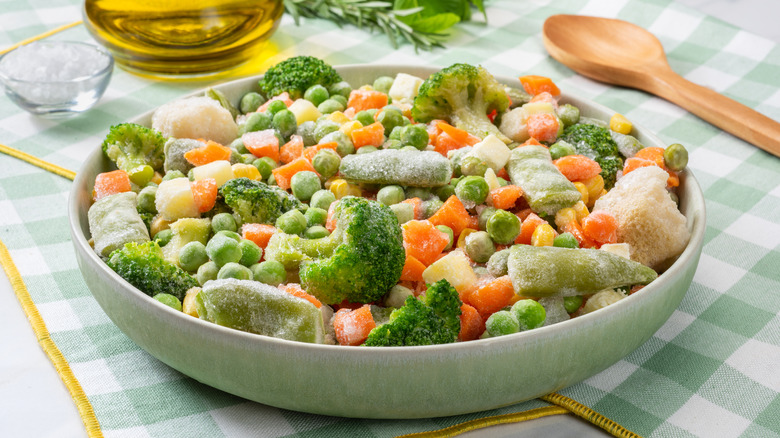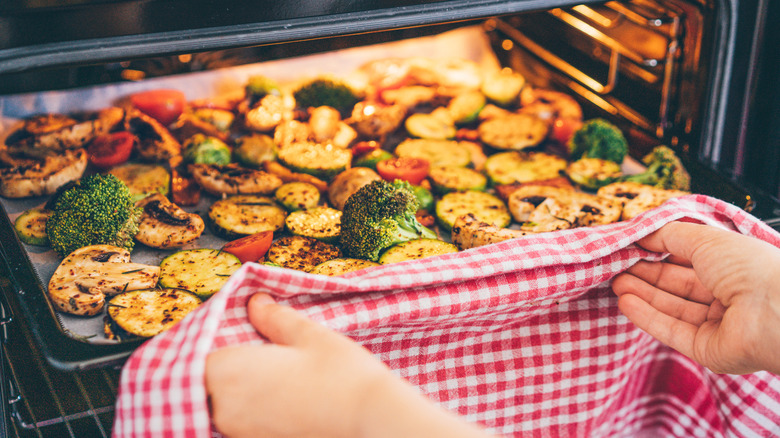The Overlooked Cooking Methods For Flavorful Frozen Veggies
Fresh vegetables are typically the stars of the dinner table, while their frozen counterparts are often relegated to a supporting role. This is because most people opt for moist heating methods such as steaming and boiling, which, unfortunately, lead to mushy results. But frozen veggies are often underrated, and with some know-how, this convenient option has the potential for bold, deep flavors that dry heat methods like sauteing and roasting can unlock.
So, why are these techniques better than the rest? They help caramelize food, turning the plant's starches into sugars that develop a nutty-tasting brown crust. Sauteing or roasting your frozen produce also adds a satisfying crispness to the skin that steaming or microwaving simply can't replicate. This is because cooking with higher, drier heat quickly evaporates excess moisture, preserving the plant's texture and resulting in a more pleasing bite. These methods may also retain color better than moist cooking methods like boiling.
Best of all, preparing frozen vegetables can save a lot of time since you'll be cooking them straight from the freezer. That's right — there's no need to thaw your veggies beforehand, because they're already partially cooked. Cooking them straight away will also help prevent mushiness, so don't worry about waiting for them to reach room temperature.
Tips for perfectly cooked frozen veggies
If you've never sauteed or roasted frozen vegetables before, here's an easy way to choose between the two — roasting is best for a crunchier texture and more caramelization, while sauteing is a good option when you're in a hurry, as it takes less time to cook the vegetables. It's also ideal when working with a frozen veggie medley that you'll likely add to other elements, like rice or pasta.
To saute, preheat a skillet over high heat, add unthawed veggies with a small amount of oil, and toss frequently. Allow three to 15 minutes for sauteing — the time will vary depending on the type of frozen vegetable you're working with. To roast your vegetables, on the other hand, preheat your oven to 425 degrees Fahrenheit, and arrange the vegetables on a lined baking pan. Drizzle with one to two tablespoons of oil, or skip the oil for dry roasting. Add seasonings before placing the tray in the oven for 15 to 25 minutes. Be sure to flip the veggies halfway through for maximum crunchiness.
Air frying is another good option that requires minimal effort and doesn't take much time. Avoid overcrowding the vegetables, and stick to one layer for the crunchiest outcome. Hosting a barbecue? Heat up your gas or charcoal grill and place lightly oiled frozen produce in a basket, on a foil-lined tray, or in a greased cast iron pan. Grilling adds a tinge of smokiness that further deepens the flavors of your food.


